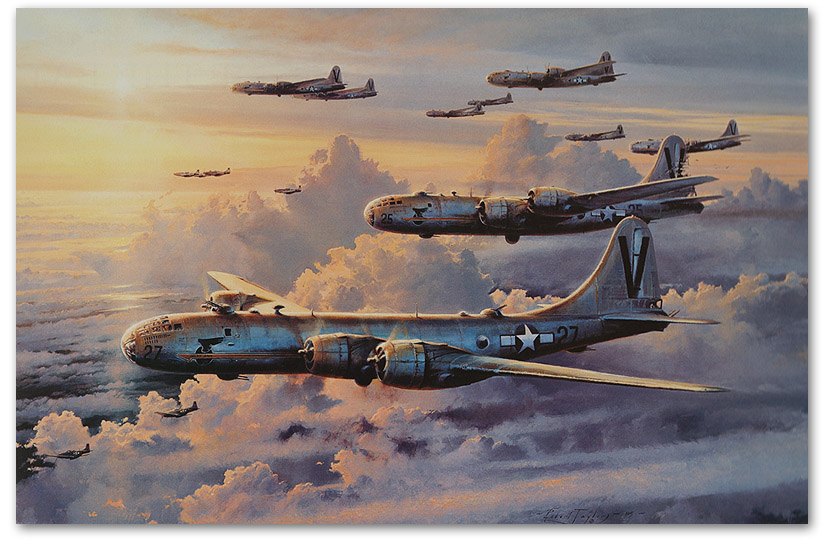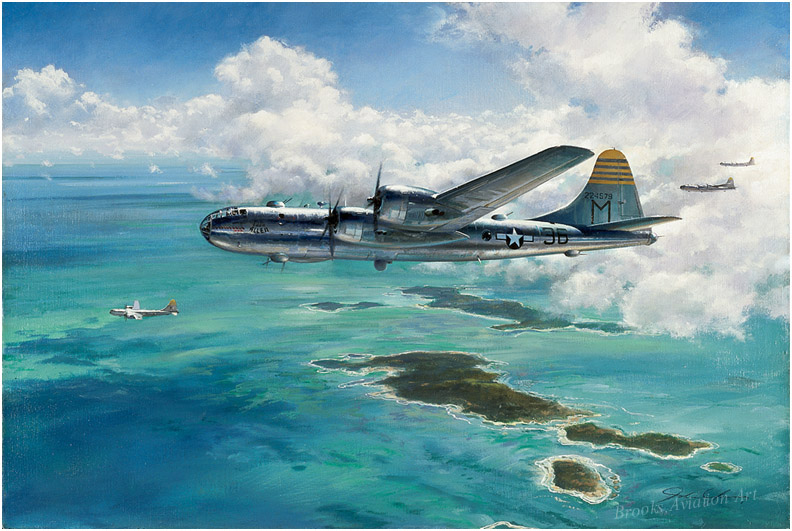|
Posted on 03/21/2003 5:23:31 AM PST by SAMWolf
|
|
 are acknowledged, affirmed and commemorated.
|

| Our Mission: The FReeper Foxhole is dedicated to Veterans of our Nation's military forces and to others who are affected in their relationships with Veterans. We hope to provide an ongoing source of information about issues and problems that are specific to Veterans and resources that are available to Veterans and their families. In the FReeper Foxhole, Veterans or their family members should feel free to address their specific circumstances or whatever issues concern them in an atmosphere of peace, understanding, brotherhood and support.
|
|
|
|
The Strategic Bombing of Japan A religious man of the Middle Ages once said that God would never allow flying machines because giving man the capability to drop bombs from the sky would surely destroy the world. His prophecy came close to being true.  During World War II, Goring's Luftwaffe terrorized London with the blitz, but he lacked the right aircraft to effectively pound a target into submission. Britain and "Bomber" Harris, as Sir Arthur was called, tried their hand at strategic daylight bombing as well, but German fighters inflicted atrocious losses and Britain was forced into making night attacks. Great Britain had the weapons, in the form of the Avro Lancaster and the Handley Page Halifax heavy bombers, but lacked the numbers and accuracy. When the United States entered the war, Hap Arnold brought a fleet of Boeing B-17 Flying Fortresses to England to inflict around-the-clock bombing on Germany-the U.S. Air force by day, the Royal Air Force by night. Though superficially it appeared to work, postwar figures showed that German production actually increased during the peak of the bombings. Was strategic bombing a flop? The air war in the Pacific was the ultimate determining factor. On April 12, 1942, a group of raiders led by Lt. Col. James H. "Jimmy" Doolittle became the first Americans to drop bombs on Japan. Doolittle's North American B-25 Mitchells inflicted little damage on Tokyo and other targets, but the daring raid did wonders for American morale.  Two years and six months later, on November 1, 1944, another American aircraft, named Tokyo Rose, flew over Japan. The plane's pilot, Captain Ralph D. Steakley, circled for 35 minutes on a photoreconnaissance run before leaving. What the Japanese people saw that day was a harbinger of destruction. Advanced aircraft such as Tokyo Rose were true thoroughbreds of the air. They were powered by four 2,200-hp engines, each turning a 16-foot-6-inch propeller. The aircraft weighed 74,500 pounds and had a maximum speed of 357 miles per hour. With a wingspan of 141 feet, 3 inches, they were truly giants in the air. The newest technology was included as well; the planes were equipped with a central fire-control system and remotely controlled guns, and had a range of 3,800 miles. So impressive and so advanced were these fighting machines that when one came down in Soviet territory, it was confiscated and then put into immediate production as the Tupolev Tu-4. In the United States, however, it was known as the Boeing B-29 Superfortress-or, in the case of a photoreconnaissance variant like Tokyo Rose, the F-13A. The great range of the B-29 Superfortress opened up the possibility of bombing the home islands of Japan. Until 1944, this aim could not be realized because the air bases in American hands were all too far away. Advance bases in China were used when the opportunity arose, but those strikes were less than effective because of supply problems and the need to fly great distances over unfriendly territory during each raid. Admiral Ernest J. King, seeing the failure of earlier bombing campaigns, visualized one begun anew from a small archipelago in the Central Pacific called the Mariana Islands.  The offensive to capture the Marianas was carried out in the summer of 1944. It was a supreme success, climaxing with the Battle of the Philippine Sea on June 19, the last classic carrier vs. carrier battle of the war. The aerial combat at Philippine Sea was so one-sided in favor of the Americans that it was nicknamed the "Marianas Turkey Shoot," and marked the demise of Japan's naval air arm in the Pacific. With the threat of naval opposition greatly diminished, two Marine divisions landed on the island of Saipan. After fighting off the greatest recorded banzai attack in history, the Americans solidified their gains. Tinian and Guam, the last two major islands in the chain, were secured on August 12. Navy Seabees began construction of an airfield almost immediately. On October 12, 1944, the first B-29 landed on Saipan's Isley Field, named after a naval commander killed during a bombing run in the Marianas campaign. The commander of this new force, the XXI Bomber Command, was Brig. Gen. Haywood S. Hansell. What he found was an airfield that barely deserved the term. A B-29 required 8,500 feet of airstrip; Isley Field had only one suitable strip, a 7,000-foot span, of which only 5,000 feet had been paved. He had been promised 80 protected parking spaces for the bombers and received only half that number. The second runway was useless to the Americans because there was a 500-foot hill at the end and, a few miles past that, mountains that could not be cleared by a fully loaded B-29. Hansell recalls that the other facilities were spartan: "I had no shops and no facilities except tents. I had a bomb dump, a vehicle park and gasoline storage, but the rest of it was the most miserable shambles I had ever seen."  These problems were eventually rectified, and Hansell, eager to begin strategic bombing missions, planned a mid-November strike on the Musashino factory in downtown Tokyo. The Navy had agreed to help in the mission but instead had to provide naval protection for General Douglas MacArthur's return to the Philippines. Hansell went ahead with the attack anyway, hoping to prove that the B-29s could survive on their own. Flying at 30,000 feet, they were virtually impervious to anti-aircraft fire and above the ceilings of the Japanese fighters. From that great height, the Norden bombsight and radar would put the bombs "right in the pickle barrel." With the threat of the enemy seemingly nullified by the technology of the Superfortress, there was plenty of reason to feel confident.
|










Disclaimer: Opinions posted on Free Republic are those of the individual posters and do not necessarily represent the opinion of Free Republic or its management. All materials posted herein are protected by copyright law and the exemption for fair use of copyrighted works.